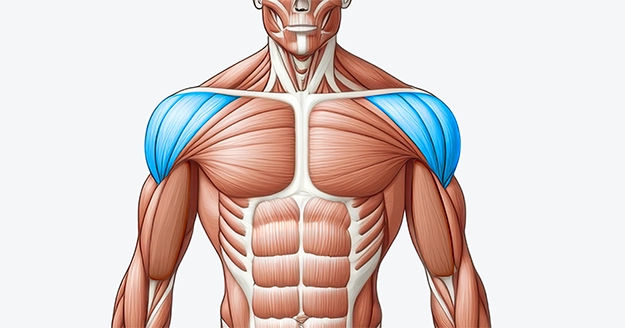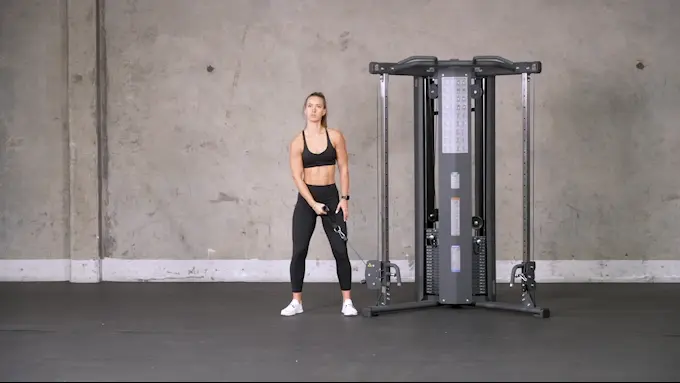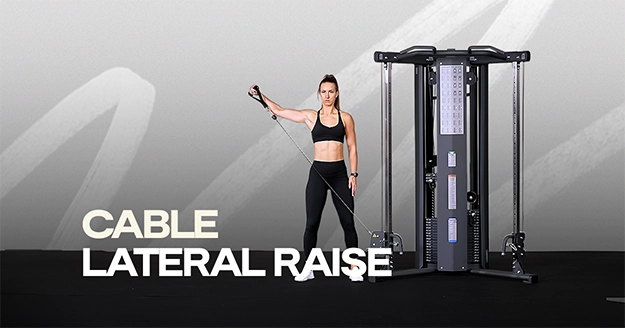Exercise Profile
Cable Lateral Raise Overview
The cable lateral raise is an effective isolation exercise that targets the lateral deltoids, which is essential for enhancing shoulder width. Unlike dumbbells, cables provide constant tension throughout the movement, evenly challenging the deltoids and enhancing muscle activation, particularly when your arm is close to your torso in the beginning.
Cable lateral raises are adaptable to all fitness levels and goals. They can be done one arm at a time to fix strength imbalances and adjusted with different heights, angles, and attachments to target the shoulders from various positions. This versatility allows for a more personalized workout, keeping it challenging and maximizing shoulder development. In addition to cable raises, variations like seated lateral raise and seated dumbbell raise can help isolate the shoulders effectively.
In summary, cable lateral raises are valuable to any shoulder routine. Their constant tension, joint-friendly mechanics, and versatility make them ideal for building shoulder width, strength, and definition.

Cable Lateral Raise Instructions
Step 1: Attach a D-handle to the cable at the lowest setting. Stand with the pulley on one side of your body and hold the handle with your opposite-side hand.
Step 2: Maintain a straight posture and use your core. Pull the handle across your body and elevate it laterally while maintaining a slight bend in your elbow.
Step 3: After a brief pause, return the handle to the starting position while maintaining control.
Step 4: After completing the prescribed number of repetitions, repeat the process for the opposite side.

Common Cable Lateral Raise Variations
Here are some common variations of cable lateral raises that target the middle deltoids in different ways to spice up your exercise regimen:
Cable Lateral Raise Tips
- Keep your pinky slightly higher than your thumb when performing lateral raises for better activation.
- Maintain a slight bend in your elbows to keep the tension in your shoulder joint and target the lateral deltoids more effectively.
- To emphasize your lateral delts, raise and lower the weights with control rather than swinging them.
- To increase the challenge, try performing cable lateral raise drop sets.
Cable Lateral Raise Common Mistakes
- Incorrect Arm Position: Your arms moving too far forward or backward might make the workout less effective and place unnecessary stress on the shoulder joints.
- Using Too Much Weight: Lifting excessively heavy weights might result in bad form and raise the chance of injury.
- Neglecting Elbow Position: Fully extending the elbows can lead to joint strain and take the focus away from the shoulder muscles.
Frequently Asked Questions
Which is better for lateral raises: cable or dumbbell?
Cable lateral raises provide steady resistance throughout the movement, while dumbbells offer the most resistance at the top. Both are effective for building shoulder strength, size, and stability.
Should I use both arms simultaneously or one at a time?
You can perform cable lateral raises one arm at a time (unilaterally) to focus on each shoulder individually or use both arms simultaneously for a different challenge. Both methods can be beneficial.
Can cable lateral raises help improve shoulder stability?
Yes, performing cable lateral raises can help improve shoulder stability by strengthening the deltoids and surrounding muscles, contributing to overall shoulder health.
Post your post-workout selfies in IG and tag @trainestapp, #trainest, or DM them to us to get a shoutout on Trainest Stories!



